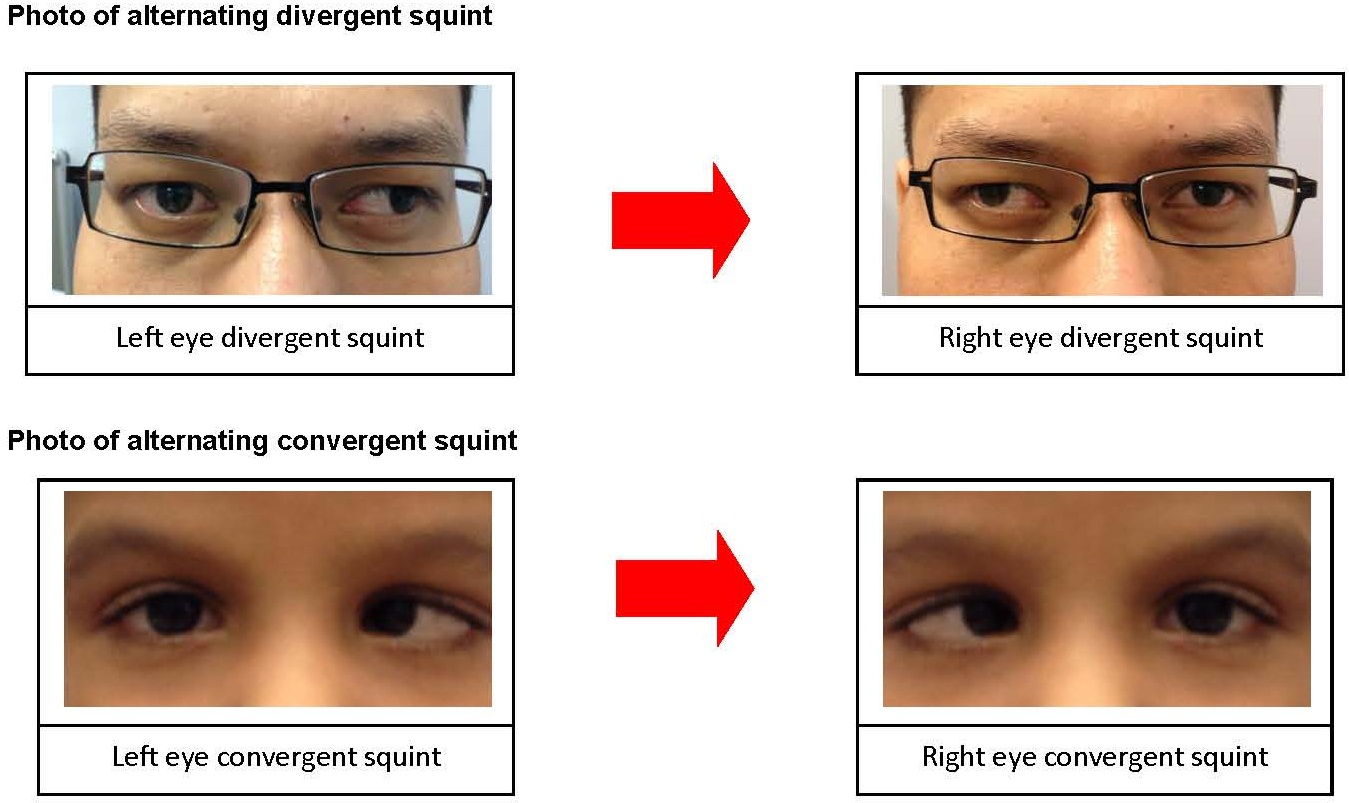What is squint?
Squintis a condition in which both eyes are not aligned when looking towards an object.
What is alternating squint?
Alternating squint refers to a condition where the patient has a squint in either eye alternately. One eye is used to see objects at a time and then the other eye is used at other time. For example, if the patient’s right eye looks at you, his/her left eye is squint. In the same patients, if his/her left eye looks at you, his/her right eye is squint.
Alternating squint might befound in the following circumstances;
- Alternating divergent squint (exotropia) that is divergent squint in either eye alternately; or
- Alternating convergent squint (esotropia) that is convergent squint in either eye alternately; or
- Alternating vertical squint. For example, a patient has right hypertropia (one eye turn upward) and then switch to left hypotropia (one eye turn downward) alternately.

Figure 2 : Photo of alternating convergent squint
Alternating squint can occurs to all ages.
Causes and contributing factors
- Long-sightedness (hyperopia), near-sightedness (myopia), or large differential power of refractive errors between the two eyes (anisometropia) which are not corrected with glasses/contact lenses.
- Hereditary factor. The risk of squint to occur is higher if there are family members who have squint.
Signs and symptoms
Patients who have alternating squint unable to see with both eyes simultaneously. As a result patients do not have a three-dimensional vision (3D) thus may have trouble estimating distance.
Alternating squintpatients usually has equal vision in both eyes because each eye received stimulation when not in squint position. Thus the risk of lazy eye due to squint is minimum.
Treatment
- An alternating squint patient who has refractive errors need to wear glasses or contact lenses to correct any refractive errors. This is important for the patient to see clearly.
- Therapy for lazy eye should be given if the child has an alternating squint together with a lazy eye problem.
- Surgery can correct squint and realigned both eyes. Squint surgery is done if the size of squint is significantly large. However, even though squint surgery has been performed, the use of glasses or treatment for lazy eye should be continued.
Complication
Alternating squint patient will probably have low self-esteem as a result of the position of the eyes that are not aligned. Therefore early assessment and treatment is crucial.
Reference :
- Figure 1 : Jabatan Oftalmologi, Hospital Kuala Lumpur
- Figure 2 : Jabatan Oftalmologi, Hospital Kuala Lumpur
- http://myhealth.moh.gov.my/v2/index.php/my/strabismus-squint
- http://myhealth.moh.gov.my/v2/index.php/en/kids-refractive
| Semakan akhir | : | 18 April 2014 |
| Penulis | : | Pn. Nor Aishah binti A. Wahab |







